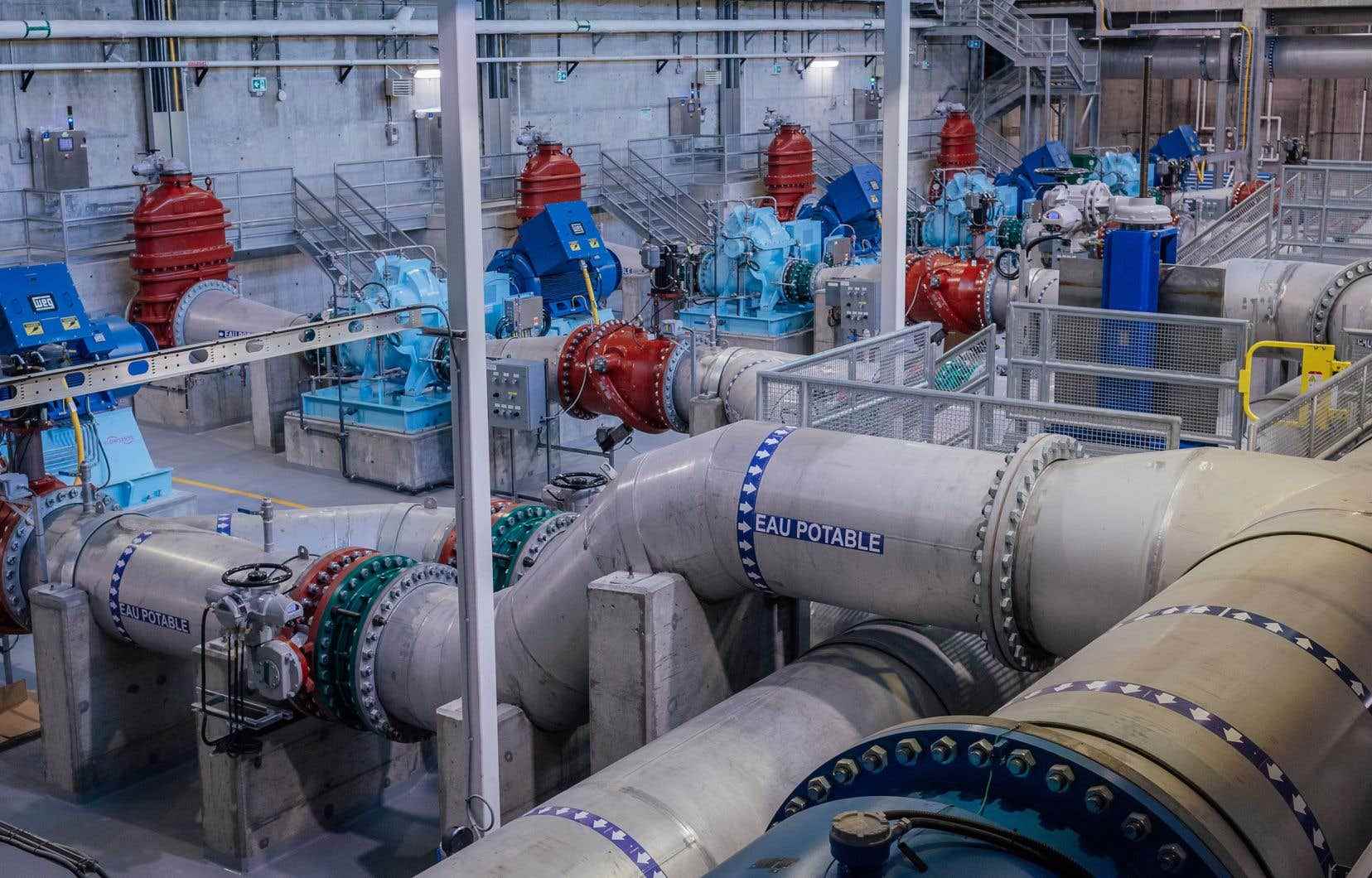On the athletics track of the Étienne-Desmarteau park, a few joggers jog gently. Many of them probably don’t know it, but under their stride hides the largest reservoir of drinking water in the city of Montreal, and even in Quebec.
Out of service for decades, the Rosemont reservoir — capable of holding 220,000 cubic meters of water — has undergone a makeover in recent years. The adjacent, brand new pumping station now pumps the precious liquid through the veins of the eastern part of the city.
“It’s mainly to increase the resilience of the network. If a pumping station fails, Rosemont can take over,” explains Denis Cochrane, the conductor of this megaproject undertaken in 2014 and completed in the fall of 2021.
According to its valves, the station can thus supply different sectors according to needs. Its water is drawn from the St. Lawrence River in LaSalle. The liquid, first treated in the Atwater drinking water production plant, is then pumped to the reservoir.
The repair of the Rosemont reservoir also required the construction of a new supply line 40 meters underground. The hole, two meters in diameter, dug by a tunnel boring machine, passes incognito under the city. A third of the cost of the work, amounting in all to 190 million, was incurred to build this four kilometer pipe.
At the end of the pipe, the pressure is sufficient to fill the Rosemont reservoir, which is located just under the race track. In fact, the tank is divided into two sections. A narrow corridor at their junction allows you to cross the bottom of the basin on foot. 60 centimeter concrete walls prevent billions of liters of water from rushing in.
Safety first
Guiding the team To have to, Mr. Cochrane is advancing along this path. Small channels collect the rare drops of water which ooze from the walls. At the end, a gauge indicates the current water level in the tank: 5500 millimetres.
In spite of the gigantism of the tank, less than 48 hours of normal consumption would be enough to empty it if it was not filled continuously. However, in the event of an emergency, such a basin secures the supply. The threat of a shortage of drinking water had notably given Montreal water officials cold sweats during the 1998 ice storm.
All of the facilities have safety as their leitmotif. Earthquake-proof foundations, bulletproof glass, split electrical supply, monstrous diesel generators in case of breakdown: nothing is left to chance.
Unlike the other reservoirs in Montreal—located on the slopes of Mount Royal—the Rosemont reservoir is not located high up. Its water is therefore distributed to the network not by gravity, but by “overpressure”. The liquid can spin up to 7 km/h through the huge stainless steel pipes in the main room.
Furthermore, the pumping station operates largely automatically. Dozens of cameras allow the teams at the Atwater complex to check that operations are going well.
With the Rosemont reservoir, the metropolis has facilities that will meet its needs for decades, argues Alain Larrivee, director of drinking water at the City of Montreal. Especially since with the incessant clogging of the aqueduct network, the volume of drinking water needed to supply Montreal is decreasing year after year. From 2001 to 2020, factory production decreased by 26%.
Montrealers can consider themselves lucky to have such a supply of drinking water, but they must be well aware that the quality of this resource also depends on agricultural and industrial activities upstream on the river. “We shouldn’t take water for granted,” concludes Mr. Larrivee.
